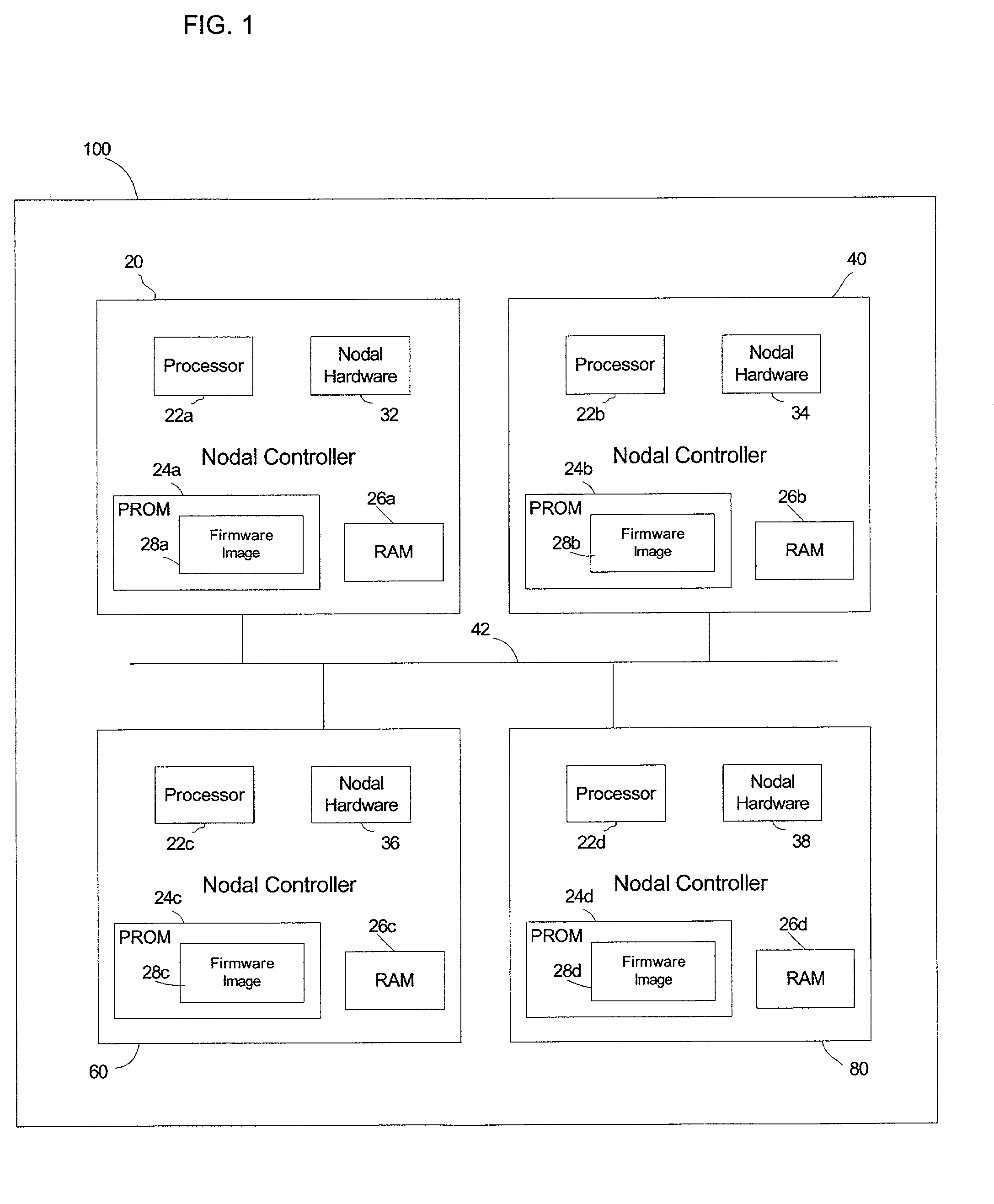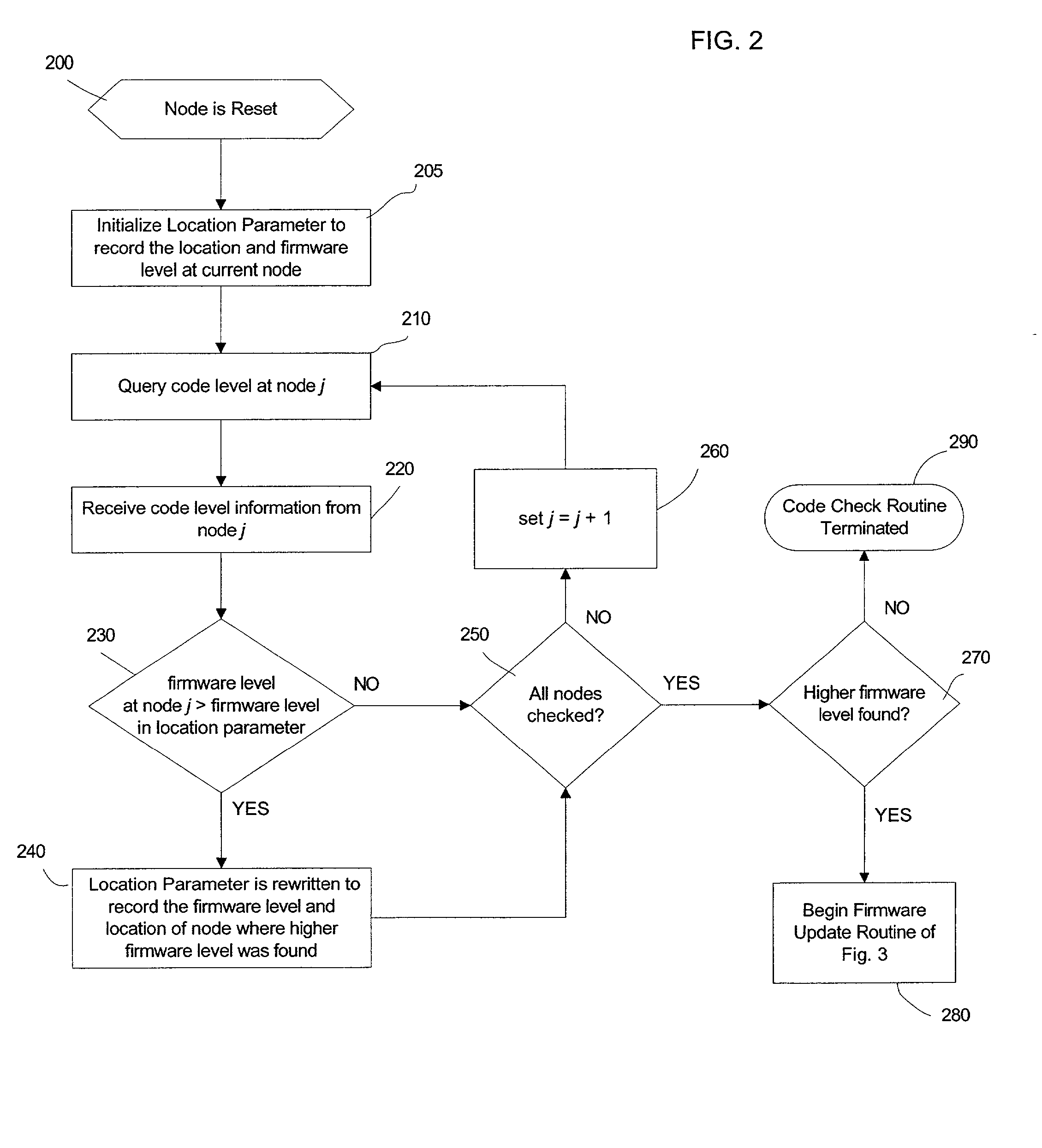Automatic firmware update of processor nodes
a technology of processor nodes and firmware updates, applied in the field of nodal architecture, can solve the problems of node firmware update, significant difference in firmware level of replacement parts, costly and time-consuming solutions, etc., and achieve the effect of reducing network traffi
- Summary
- Abstract
- Description
- Claims
- Application Information
AI Technical Summary
Benefits of technology
Problems solved by technology
Method used
Image
Examples
Embodiment Construction
[0008] Provided is a method, system, and program for updating the firmware in a nodal system. The nodal system includes at least two nodes, wherein each node includes a processing unit and a memory including code. The nodes communicate over a communication interface. At least one querying node transmits a request to at least one queried node in the nodal system for a level of the code at the node over the communication interface. At least one node receives a response from the queried node receiving the request indicating the level of code at the queried node over the communication interface. The node receiving the response determines whether at least one queried node has a higher code level.
[0009] Further, the node receiving the response requests a copy of the code at the higher code level queried node if one queried node has the determined higher code level. The node requesting the copy of the code updates the memory with the requested copy of the higher code level from the queried...
PUM
 Login to View More
Login to View More Abstract
Description
Claims
Application Information
 Login to View More
Login to View More - R&D
- Intellectual Property
- Life Sciences
- Materials
- Tech Scout
- Unparalleled Data Quality
- Higher Quality Content
- 60% Fewer Hallucinations
Browse by: Latest US Patents, China's latest patents, Technical Efficacy Thesaurus, Application Domain, Technology Topic, Popular Technical Reports.
© 2025 PatSnap. All rights reserved.Legal|Privacy policy|Modern Slavery Act Transparency Statement|Sitemap|About US| Contact US: help@patsnap.com



